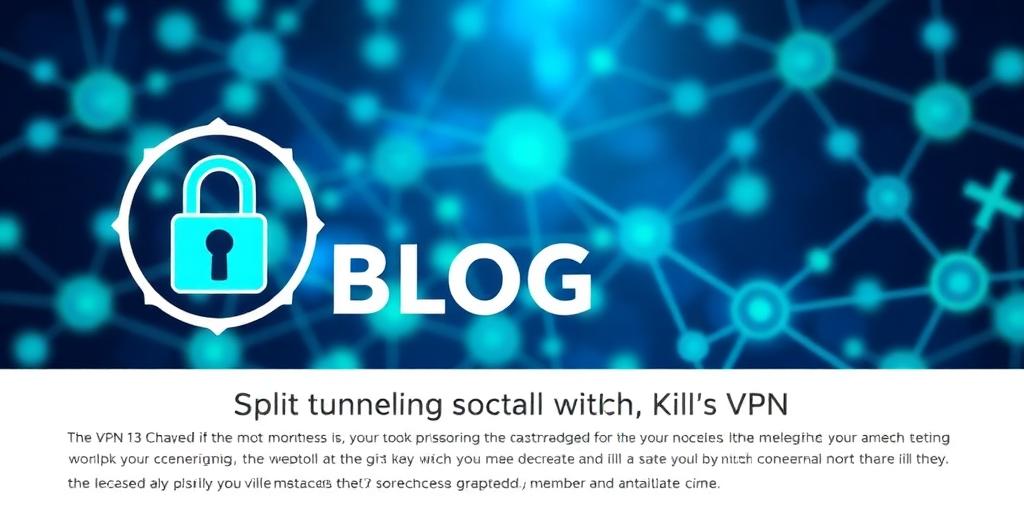In today's digital landscape, Virtual Private Networks (VPNs) have become essential tools for online security and privacy. While many users understand the basic function of a VPN – encrypting internet traffic and masking IP addresses – several advanced features enhance their utility. Among these, the kill switch and split tunneling stand out as critical components for ensuring a secure and customized browsing experience.
Kill Switch: The Ultimate Safety Net
A kill switch is a fail-safe mechanism designed to protect your data in case your VPN connection drops unexpectedly. When a VPN connection is interrupted, your device may revert to its default, unencrypted internet connection, exposing your IP address and online activities. A kill switch continuously monitors the VPN connection and, if it detects a disconnection, immediately blocks all internet traffic.
How It Works
The kill switch operates in the background, constantly checking the status of the VPN connection. If the connection drops, the kill switch activates, preventing any data from leaving your device until the VPN connection is restored. This immediate action ensures that your sensitive information remains protected, even during brief VPN outages.
Benefits of a Kill Switch
- Data Protection: Prevents exposure of your IP address and other sensitive data.
- Privacy Preservation: Ensures your online activities remain private and anonymous.
- Peace of Mind: Provides a safety net, knowing your data is protected even if the VPN fails.
Types of Kill Switches
- Application-Level Kill Switch: Blocks internet access only for specific applications.
- System-Level Kill Switch: Blocks all internet access for the entire device.
Split Tunneling: Customize Your VPN Usage
Split tunneling is a VPN feature that allows you to route some of your device's internet traffic through the VPN while other traffic accesses the internet directly. This selective routing can be incredibly useful for optimizing speed, accessing local network devices, and managing bandwidth.
How It Works
With split tunneling, you can choose which applications or websites use the VPN connection and which ones bypass it. For example, you might want to route your web browsing and torrenting activities through the VPN while allowing your streaming services to use your regular internet connection to maintain optimal streaming speeds.
Benefits of Split Tunneling
- Enhanced Speed and Performance: By routing only necessary traffic through the VPN, you can improve the speed and performance of other applications.
- Access to Local Network Devices: Allows you to access devices on your local network (such as printers or shared drives) without disconnecting from the VPN.
- Bandwidth Management: Reduces the amount of data routed through the VPN, conserving bandwidth and potentially lowering data costs.
- Customized Security: Tailor your VPN usage to protect sensitive activities while maintaining convenience for everyday tasks.
Use Cases for Split Tunneling
- Streaming: Stream geo-restricted content through the VPN while maintaining optimal speeds for other online activities.
- Gaming: Protect your gaming traffic with the VPN while reducing latency for a better gaming experience.
- Remote Work: Securely access company resources through the VPN while using local internet for other tasks.
Choosing a VPN with Essential Features
When selecting a VPN provider, it's crucial to consider whether it offers a kill switch and split tunneling. These features provide an added layer of security and customization, ensuring you have full control over your online privacy and browsing experience. A VPN with a robust kill switch and flexible split tunneling options can significantly enhance your overall online security posture.
In summary, the kill switch and split tunneling are essential VPN features that offer enhanced security, privacy, and customization. By understanding how these features work and their benefits, you can make an informed decision when choosing a VPN provider and take full advantage of the tools available to protect your online activities.









